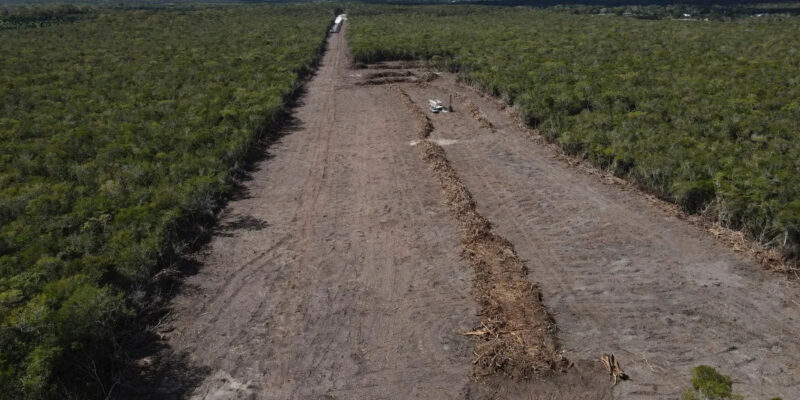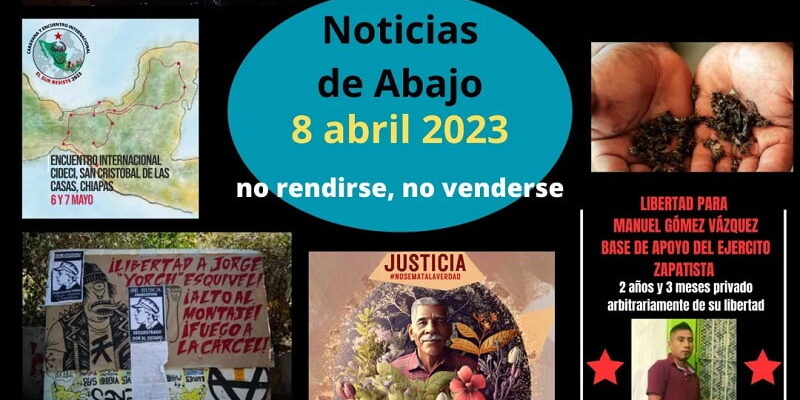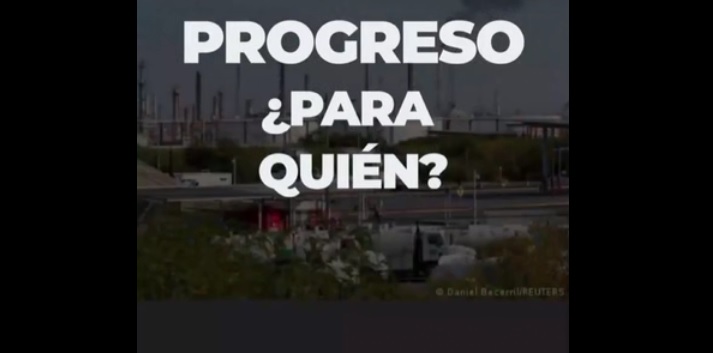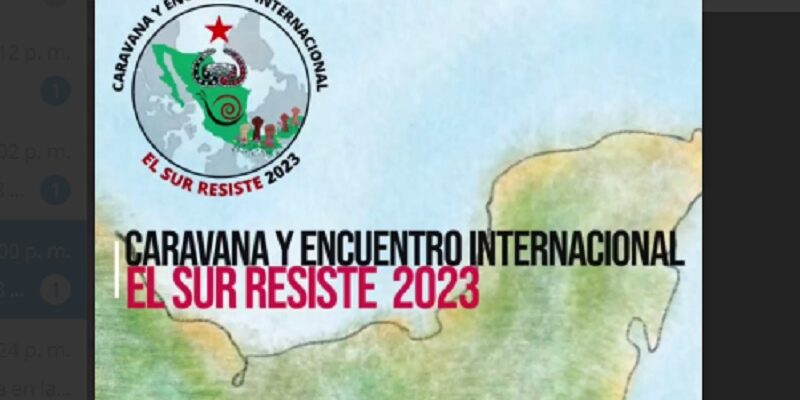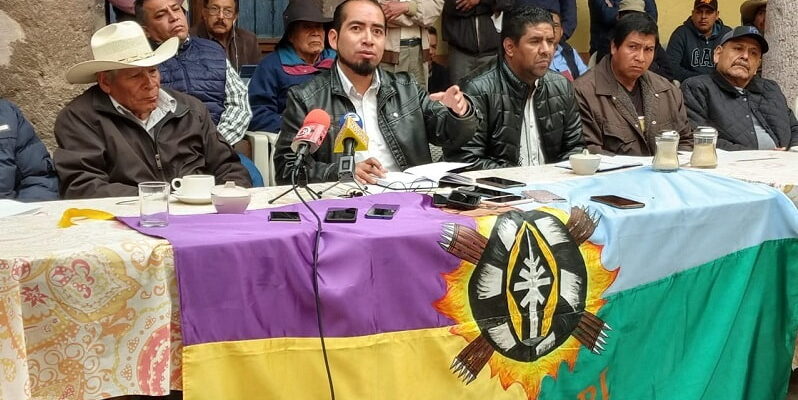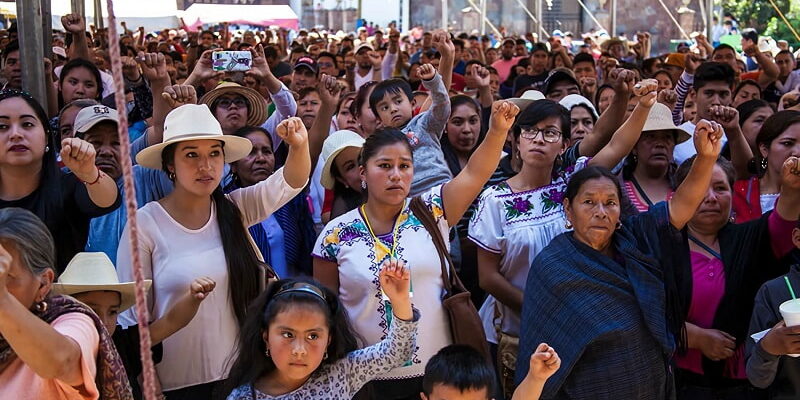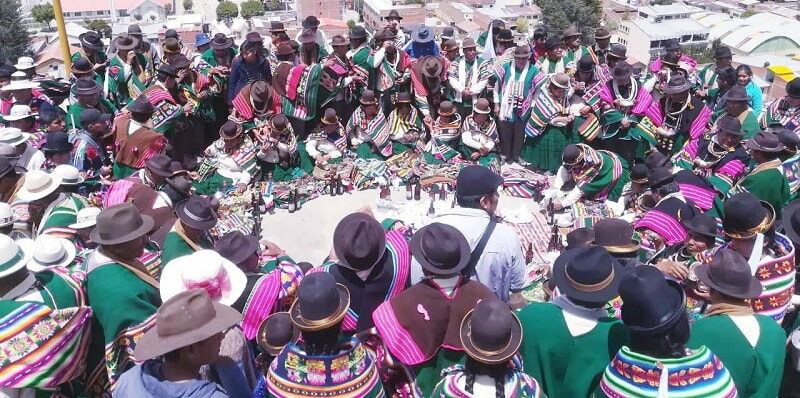
The Fight of the Maya Against the Mayan Train in Mexico
By Diego Estebanez García
MADRID — It has often been referred to as a “Pharaonic project” and, indeed, the Mayan Train being laid through Mexico’s Yucatán Peninsula can be compared to the works of the pharaohs of ancient Egypt.
The Mayan Train is an infrastructure plan that spans 965 miles, crosses five Mexican States and 41 municipalities, and has seven sections. When all is said and done it is estimated to cost around 230 billion Mexican pesos, or $12.7 billion.
The Mayan Train is President Andrés Manuel López Obrador’s (known as “AMLO”) greatest infrastructure bet. His government claims that the project has brought already more than 100,000 jobs and that will spark development in a historically forgotten region of Mexico through tourism attraction.
AMLO has made it his priority that the train be finished by the end of 2023, so much so that he increased its budget by almost 116 percent this year. It will now cost 146 billion pesos ($8 billion) to finish the works that, at this moment, are almost 44 percent completed according to the Secretariat of Tourism.
Nonetheless, the project that started in 2018 has sparked controversy and anger from diverse groups, including environmentalists, biologists and academics, and even from civil society. But one of the most ignored groups in this fight against the megaproject, which is only one part of AMLO’s grander National Development Plan, is the Maya people who called the Yucatán their home for more than a thousand years.
“It is not a train, nor is it Mayan,” says Ángel Sulub, a Maya activist and member of the Congreso Nacional Indígena, a national movement of Indigenous peoples from all over Mexico. The group was founded in 1996 after the Zapatista uprising in the southern state of Chiapas two years earlier.
Sulub is in Madrid on a mid-March afternoon giving a conference about the risk and dangers posed by the train project not only to the environment or local archeological sites, but to the Maya people themselves and their way of life.
“It is a megaproject that articulates many other extractive projects that are already on the peninsula,” he explains.

Ángel Sulub, a Maya activist and member of the Congreso Nacional Indígena, during a recent conference on the many concerns, both environmental and human, surrounding Mexico’s Mayan Train project, Madrid, Spain, Thursday, March 16, 2023 (Diego Estebanez García/Latino Rebels)
While showing a presentation that details the history of the Mayan people’s fight throughout the decades, Sulub also recites how the development initiatives have been put in place since the 1970s, when Cancún and Playa del Carmen went from small fishing towns to the big tourist draws they are today.
“In this context of 53 years of policies that aim towards hypertourism, traditional practices of towns such as the Milpa Maya have been dismantled,” he says.
And not only have traditional practices been affected. Massive tourism has brought large-scale destruction to the Maya world for decades.
“There’s agro-industry, which has devastated a large part of the jungle and has terribly contaminated the water and soil, with the use of agrochemicals that are present in the water, even in mother’s breast milk and in the urine of children, according to the latest studies that have been carried out. Especially with Monsanto’s glyphosate,” Sulub explains.
The Maya people’s movement fears that this will only aggravate the situation. Damages to the environment in the Riviera Maya area have been extensively documented, especially due to the recent construction of the Mayan Train. Officially, the government says that 3.4 million trees have been cut down to build the train’s railways, although conservationist groups say the real estimate could be around 10 million—all this despite the president’s promises that no tree would be affected.
“There is an incredible output of wood, especially what is being sawed from the construction. We see remains of giant mahogany trees, and we don’t know what is being done with it. We see mahogany trees, sapodilla trees, ceiba trees, and granadillo trees, which are very valuable and expensive in the market and, indeed, no one knows what is happening,” says Sulub.
Government officials have explained in the past that not all the trees have actually been taken down. Some have been moved to other locations, and they say as well that for every tree felled, one would be planted. They also claim that the wood is being used as organic fertilizer.
A Referendum in Doubt
In December 2019 a referendum was held by the Mexican government to consult with Indigenous peoples about the construction and development of the project. Around 10,000 people were said to have participated, from around a thousand Indigenous communities.
The result was overwhelming approval by more than 90 percent, although the voting was criticized by opposition groups and even called out by the U.N. high commissioner for human rights. Sulub says there wasn’t a true information campaign about the negative impacts the project would have, and there were claims about a lack of participation among Indigenous groups.
Sulub says that, in reality, even though the Mayan Train enjoys strong support among Mexicans living inside the five states involved, a large section of the Maya people are against it or express concerns about the long-term negative consequences the train will have.
“We cannot certainly say how many people are against this project. The majority of the population inside the Yucatán Peninsula is in favor of it, but that approval has to be analyzed with its complexity. Those people who are mostly in favor, the only thing they know is that they need work. The argument of jobs has been very powerful because there is so much impoverishment in the area,” explains Sulub.
One of the main arguments made by the Indigenous movement against the “neoliberal” development model, which has been implemented throughout the region, is that the only jobs offered to the Maya people are those of servitude.
For the Maya people themselves it means becoming, once again, the drudges of a powerful tourism industry that takes advantage of and exploits labor through undignified pay, a lack of social security, and depressing housing conditions marked many times by subhuman overcrowding. They migrate from their communities to the cities and face a reality for which we are not prepared: insecurity, crime, human trafficking,” Sulub says.
He adds that the immediate negative impacts of the works, as well as the drug and violence-related issues surrounding Quintana Roo’s big cities, are a major concern for the Maya living in the south of the peninsula, who fear that such miseries will spread to their areas.
“There is a fear of an out-front debate surrounding these issues, such as the environmental impacts or violence. Because when we go to the communities, we talk with the elderly about the devastation of the jungle, they say to us: ‘We don’t want that.’ And we talk to the mothers of families and they say: ‘I don’t want my daughters to experience what is experienced in Cancún,’ referring to the wave of drug violence and femicides. But there are no protests or direct critics,” Sulub complains.
Militarization and Intimidation
This widespread fear among the Maya people may stem from a change in the security strategy that AMLO has implemented across the country. The Secretariat of National Defense (SEDENA, in Spanish) has been empowered in recent years, spanning from the administration and construction of Mexico City’s newest airport, Felipe Ángeles International, to the newly formed National Guard and the country’s overall strategy to combat drug cartels.
While at the beginning the Mexican army was only providing security for the project, over time the military has gained greater and greater control over it—even becoming the builders for the upcoming sixth and seventh sections of the railway and part of the fifth, after the company Grupo México left the project last year due to the government’s tight schedule. Now the army is set to become the Mayan Train’s overall administrator and operator once it starts running. The secretary of tourism announced that revenues from the train will go directly to the soldiers’ pension fund.
“It is a continuation of the militarization that suppresses the dissent from the Indigenous communities, that started with the Zapatista Movement in 1994 and that arrives today in the form of this train,” says Sulub, who also argues that intimidation against fellow activists has intensified during the current administration.
He and other Maya also feel let down by the judicial system in their fight against this project. Though more than 30 judicial appeals have been filed against the continuation and development of the works from environmental groups such as Selvame del Tren, because of a lack of environmental studies or permits for land use changes, among other things, the government has found ways to continue with the project.
The last judicial decision was a total suspension of the construction of the fifth sector of the railway due to a missing permit. Nevertheless, for the Maya activists, the damage was done.
Montzquesisalta: #SelvameDelTren @SalvameTrenBot https://t.co/KUhEfCADZS
— Selvame del Tren Maya Bot (@SalvameTrenBot) March 21, 2023
One of the government’s strategies is to promote the community work being done alongside the Mayan Train project.
#SúbeteAlTren 🚄 La artesanía es una gran expresión cultural de los pueblos; en Palenque, punto de arranque del Tren Maya, encontramos una de las más bellas muestras en los trajes regionales, bordados y pirograbados con figuras y elementos de la cultura maya#SúbeteALaHistoria 🔍 pic.twitter.com/9lRaPYLF6M
— Tren Maya (@TrenMayaMX) March 30, 2023
#SúbeteAlTren 🚄 La artesanía es una gran expresión cultural de los pueblos; en Palenque, punto de arranque del Tren Maya, encontramos una de las más bellas muestras en los trajes regionales, bordados y pirograbados con figuras y elementos de la cultura maya#SúbeteALaHistoria 🔍 pic.twitter.com/9lRaPYLF6M
— Tren Maya (@TrenMayaMX) March 30, 2023
(Español) A Bety Cariño, quien cumpliría 50 años este 8 de abril de 2023
El 8 de abril de 2023, Alberta “Bety” Cariño Trujillo cumpliría 50 años. Fue asesinada el 27 de abril de 2010, cuando paramilitares emboscaron a una caravana en su camino a la comunidad indígena de San Juan Copala, Oaxaca, México. En el ataque murió también Jyri Jaakkola, un activista finlandés, y varias personas resultaron heridas.
Recordamos a Bety con esta video-entrevista y seguimos exigiendo justicia:
Sembrando sueños, cosechando esperanzas: Bety Cariño
Campaña internacional “Semillas que florecen. Justicia para Bety y Jyri”
